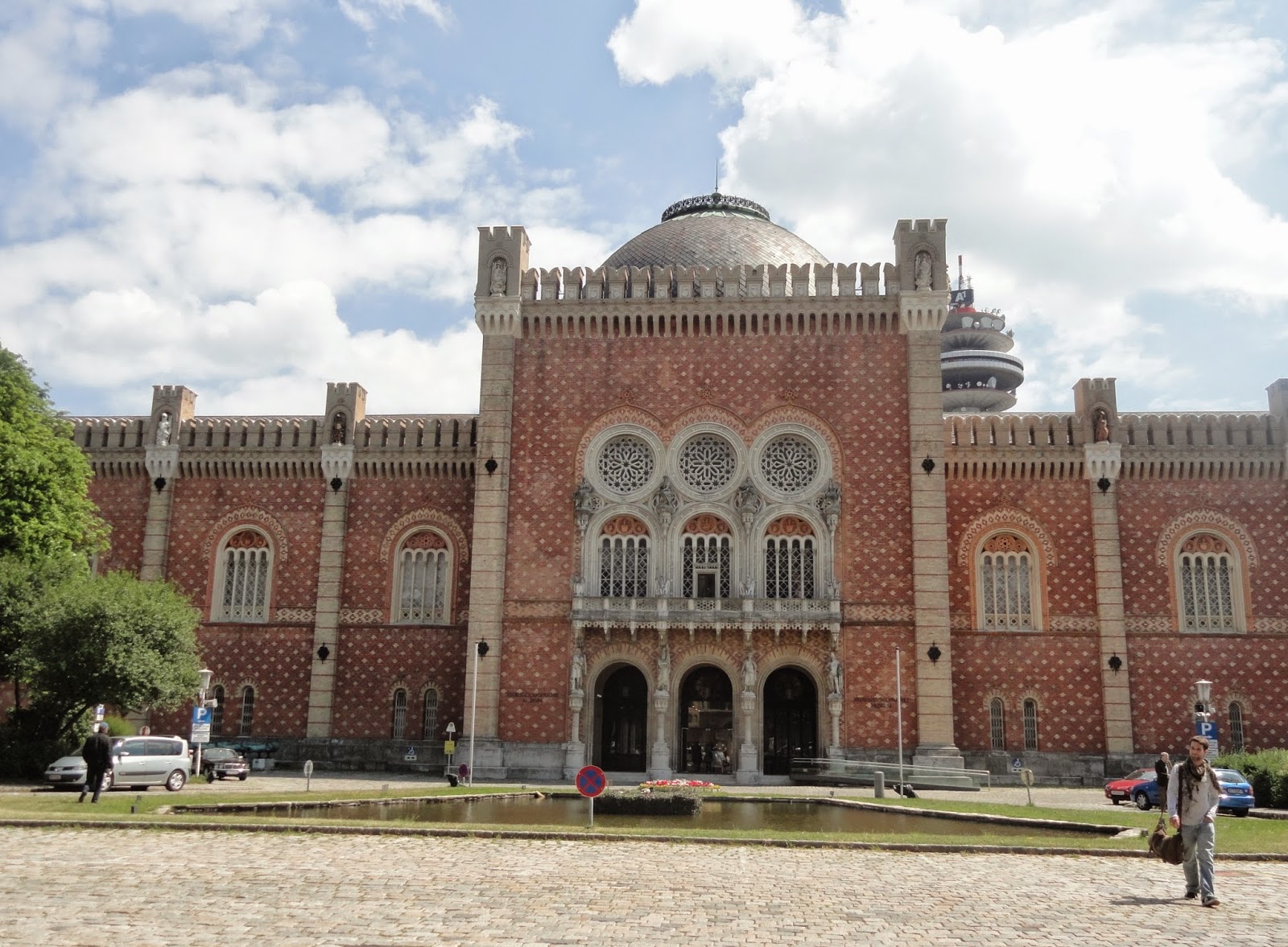After spring break, I settled back into my life in Vienna,
including immediately needing to get over another cold. I’ve honestly been sick
more times this semester than in the past several years combined. It’s a bit
frustrating at times, but I’ve managed to push through each of my bouts of
illness. Also frustrating was having my wallet stolen at the beginning of May,
but thankfully, with time, money, and some work, everything was replaceable.
One of the best things about Vienna has been seeing the
flowers bloom as spring arrives. Especially wonderful were the blooming lilacs. Lilacs are my
favorite scent and immediately remind me of home and family, since I have a
lilac bush back home. Smelling the lilacs was like a scent
of home in Austria, simultaneously wonderful and a bit sad since it made me a little homesick.
Another flower highlight is the rose garden in the
Volkspark. There is every imaginable variety
of rose in the garden, and our professor was completely on the mark when she
described the roses as spectacular.
For class, we’ve continued to visit more museums. Highlights
include Belvedere, the summer palace of Prince Eugene of Savoy, who served as a
very successful military general for the Hapsburgs. It’s currently an art museum with art from a
variety of art periods, including Gustav Klimt’s Der Kuss.
Source: http://de.wikipedia.org/w/index.php?title=Datei:Gustav_Klimt_016.jpg&filetimestamp=20120409065933
Here are some shots of the palace itself.
Near Belevedere is Schwarzenburgplatz, which has this cool sculpture. According to our professor, it
is composed of people interconnected with each other, although I just see cool
geometric shapes. Regardless, I like it. In an interesting juxtaposition, behind the
sculpture are a fountain (It’s great to walk through the square when it’s warm
because of the mist) and the Soviet War Memorial.
We also visited the Heeresgeschichtliches Museum, Vienna's military history museum. Although not the most interesting thing for me, seeing the car/clothes in which Franz Ferdinand was killed (subsequently leading to the start of World War I) and the flamboyant Hungarian military uniforms, including turquoise ostrich feathers an leopard skin capes, were cool to see.
I also finally visited Stephansdom and I was surprised to find that it was one of the most beautiful things I've seen in Vienna. The day I was there, long colored plastic sheets were covering the windows (really similar to lighting gels), creating some absolutely beautiful light patters on the wall. Forget the Gothic style church architecture and the Baroque altars, the play of color and light on the wall was the amazing part. In places, the way the blues played on the ceiling made it look like the sky, as if it were enchanted like the Great Hall at Hogwarts.
However, the best play I've seen was Cate Blanchett and her theatre company's production of Big and Small. Although the scenes didn’t exactly connect together well, each scene was fantastic individually and the play was both funny and full of important themes. Most of all, Cate Blanchett is an amazing actress. I knew she was a great from her films, but seeing her perform on stage was a pleasure.
I also took a tour with my class of the Burgtheater, Vienna’s largest theatre where we’ve seen a number of shows. It was great to see the behind the scenes aspects of the theatre and the Burgtheater is impressive. There is a huge revolving stage, a 17m tall understage storage area, and 120 fly lines. However, the most fascinating part of the Burgtheater and theater here in general is how the entire scenery is changed on a daily basis. I can’t imagine working in a theater where the entire set needs to be rebuilt every day.
I also took a tour with my class of the Burgtheater, Vienna’s largest theatre where we’ve seen a number of shows. It was great to see the behind the scenes aspects of the theatre and the Burgtheater is impressive. There is a huge revolving stage, a 17m tall understage storage area, and 120 fly lines. However, the most fascinating part of the Burgtheater and theater here in general is how the entire scenery is changed on a daily basis. I can’t imagine working in a theater where the entire set needs to be rebuilt every day.
The following are Gustav Klimt's beautiful paintings in the side entrances:
Although illness and school have presented challenges, I'm really enjoying Vienna and am looking forward to spending another month here.














































































